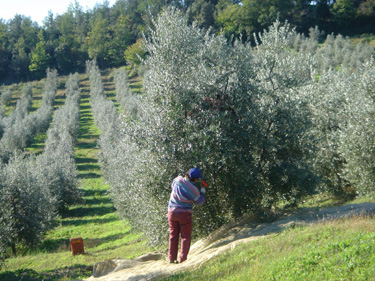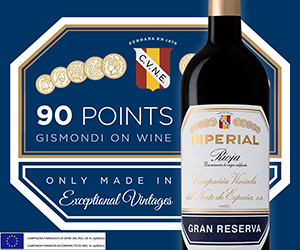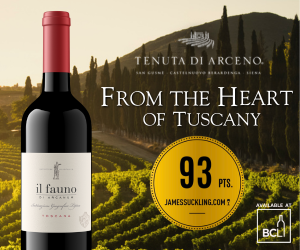On the western coast of Tuscany lies a stretch of land called "The Coast of the Etruscans".
On the western coast of
The ancient Etruscans dominated the area from the 10th to the 3rd century B.C. as it was the centre of Etruscan military power. However, all good things come to an end as the Romans defeated the Etruscans in the 3rd century. Through the following centuries the region was under the domination of many regimes and in the Middle Ages it was under the rule of
The marshes of Maremma were first drained by canals created by the Etruscans but after their defeat, the region fell into in swamp once again. The area was not fully drained and free from malaria again until the beginning of 20th century. The area is now a mixture of beach, pine woods, mediterranean scrub, wetlands, sunny plains, olive groves and rolling hills against a backdrop of low mountains.
The region now boasts four small, relatively new DOC's - Montescudaio, Bolgheri, Val di Cornia and
You might credit those who exiled Napoleon Bonaparte to the
The most famous DOC is Bolgheri, located in the commune of Castagneto Carducci. It is in Bolgheri that the first cabernet sauvignon grapes were planted by Marchese Mario Incisa della Rochetta at Tenuta San Guido, the producer of Sassiscaia, in 1944. However, it was not until further vineyard expansion closer to the town and the release of the 1968 Sassicaia that the region truly started to gain recognition for the potential of cabernet and merlot. However, the DOC for Bolgheri Rosso and Bianco was only approved in 1984.
All four DOC's are heavily influenced by the westerly maritime winds. Summer days are hot but are freshened by brisk sea breezes and cool nighttime temperatures, particularly in Castagneto Carducci. The moderate climate aided by the maritime winds has resulted in a microclimate that has allowed grape varieties such as cabernet sauvignon, cabernet franc, merlot, sauvignon blanc and syrah to achieve optimal ripeness. Recently, petit verdot became an approved variety, completing the major
Indeed, the best local white is made from vermentino which has a combination of fruit characteristics like that from ripe sauvignon blanc and pinot grigio with elegance and acidity.
Soils are mostly alluvial with some volcanic and ocean deposits and can be broken inato two types: brown red loam and clay, with a little limestone and the grey white clay soils composed primarily of clay and sand, rich in limestone and mixed with abundant stones and pebbles.
The success that Sassicaia (now a blend of cabernet sauvignon 80%, cabernet franc 20%) has enjoyed has led to many others establishing footholds. A common attraction for all was the recognition of the potential of the whole area to produce fine Bordeaux style wines as well as modified Tuscan wines with sangiovese and ciliegiolo i.e. Super Tuscans.
The region is now a virtual glamour show with great wines. After Sassicaia came Podere Grattamacco; Tenuta Dell'Ornelliai Estate (Ornellaia and Masseto wines), started by Lodovico Antinori but now owned by the Frescobaldi family and Michael Mondavi; and Michele Satta - all became established in the late 1980's. At about the same time, Tenuta Belvedere, owned by Marchese Piero Antinori, released their first vintage (1990) of Guado al Tasso. Then came Le Macchiole, Enrico Santini, Azienda Agricola Ceralti; and more recently, Angelo Gaja with Ca' Marcanda. Even
There is also Ambrogio Folonari and his son Giovanni that split from Ruffino and will eventually release wines from Campo al Mare although the vineyards are very young. Unfortunately, the DOC is also near capacity for plantings.
On the western coast of
The ancient Etruscans dominated the area from the 10th to the 3rd century B.C. as it was the centre of Etruscan military power. However, all good things come to an end as the Romans
defeated the Etruscans in the 3rd century. Through the following centuries the region was under the domination of many regimes and in the Middle Ages it was under the rule of
The marshes of Maremma were first drained by canals created by the Etruscans but after their defeat, the region fell into in swamp once again. The area was not fully drained and free from malaria again until the beginning of 20th century. The area is now a mixture of beach, pine woods, mediterranean scrub, wetlands, sunny plains, olive groves and rolling hills against a backdrop of low mountains.
The region now boasts four small, relatively new DOC's - Montescudaio, Bolgheri, Val di Cornia and
You might credit those who exiled Napoleon Bonaparte to the
The most famous DOC is Bolgheri, located in the commune of Castagneto Carducci. It is in Bolgheri that the first cabernet sauvignon grapes were planted by Marchese Mario Incisa della Rochetta at Tenuta San Guido, the producer of Sassiscaia, in 1944. However, it was not until further vineyard expansion closer to the town and the release of the 1968 Sassicaia that the region truly started to gain recognition for the potential of cabernet and merlot. However, the DOC for Bolgheri Rosso and Bianco was only approved in 1984.
All four DOC's are heavily influenced by the westerly maritime winds. Summer days are hot but are freshened by brisk sea breezes and cool nighttime temperatures, particularly in Castagneto Carducci. The moderate climate aided by the maritime winds has resulted in a microclimate that has allowed grape varieties such as cabernet sauvignon, cabernet franc, merlot, sauvignon blanc and syrah to achieve optimal ripeness. Recently, petit verdot became an approved variety, completing the major
Indeed, the best local white is made from vermentino which has a combination of fruit characteristics like that from ripe sauvignon blanc and pinot grigio with elegance and acidity.
Soils are mostly alluvial with some volcanic and ocean deposits and can be broken inato two types: brown red loam and clay, with a little limestone and the grey white clay soils composed primarily of clay and sand, rich in limestone and mixed with abundant stones and pebbles.
The success that Sassicaia (now a blend of cabernet sauvignon 80%, cabernet franc 20%) has enjoyed has led to many others establishing footholds. A common attraction for all was the recognition of the potential of the whole area to produce fine Bordeaux style wines as well as modified Tuscan wines with sangiovese and ciliegiolo i.e. Super Tuscans.
The region is now a virtual glamour show with great wines. After Sassicaia came Podere Grattamacco; Tenuta Dell'Ornelliai Estate (Ornellaia and Masseto wines), started by Lodovico Antinori but now owned by the Frescobaldi family and Michael Mondavi; and Michele Satta - all became established in the late 1980's. At about the same time, Tenuta Belvedere, owned by Marchese Piero Antinori, released their first vintage (1990) of Guado al Tasso. Then came Le Macchiole, Enrico Santini, Azienda Agricola Ceralti; and more recently, Angelo Gaja with Ca' Marcanda. Even
There is also Ambrogio Folonari and his son Giovanni that split from Ruffino and will eventually release wines from Campo al Mare although the vineyards are very young. Unfortunately, the DOC is also near capacity for plantings.
Up until recently, there were approximately 250 hectares planted in the DOC Bolgheri but now there are around 800 hectares. The bench slopes running north south and towards the ocean west and the flatlands are close to capacity. Many areas are still agricultural with vegetables, olive orchards, forest and wheat prominent. Some parts of the hills have been cleared and planted but additional plantings face many obstacles. Of paramount importance are environmental concerns to deforestation of the woodlands and conservation of the natural habitat.
The northern DOC of Montescudaio has been growing but so far lacks the attraction and density of Bolgheri but has the well known Castello del Terriccio with its Lupicaia. Similarly, Val di Cornia, centered around the town of
Common features that the three prior DOC's share are intensity and ripeness of fruit, richness and good acidity. There is also a singular character that runs through the whole area in nearly every red variety - a certain gamey, salty aroma and flavour resulting from the sea air and forests, called il salmastro.
According to Michele Satta, one of the more established statesman in the region, Bolgheri is all about elegance, balance and flavours. He believes that it is also important to remain true to the style that Bolgheri is now creating and not venture into other areas and lose the current balance.
Finally, the DOC of
Indeed, if you look at all the scores the wines from this region have garnered in the last 10 years of super growth, it is truly phenomenal. There is no other region other than perhaps Brunello or Barolo that has produced such a slate of top wines. All this is from a tiny number of producers with a relatively short history of production. Truly, the
Up until recently, there were approximately 250 hectares planted in the DOC Bolgheri but now there are around 800 hectares. The bench slopes running north south and towards the ocean west and the flatlands are close to capacity. Many areas are still agricultural with vegetables, olive orchards, forest and wheat prominent. Some parts of the hills have been cleared and planted but additional plantings face many obstacles. Of paramount importance are environmental concerns to deforestation of the woodlands and conservation of the natural habitat.
The northern DOC of Montescudaio has been growing but so far lacks the attraction and density of Bolgheri but has the well known Castello del Terriccio with its Lupicaia. Similarly, Val di Cornia, centered around the town of
Common features that the three prior DOC's share are intensity and ripeness of fruit, richness and good acidity. There is also a singular character that runs through the whole area in nearly every red variety - a certain gamey, salty aroma and flavour resulting from the sea air and forests, called il salmastro.
According to Michele Satta, one of the more established statesman in the region, Bolgheri is all about elegance, balance and flavours. He believes that it is also important to remain true to the style that Bolgheri is now creating and not venture into other areas and lose the current balance.
Finally, the DOC of
Indeed, if you look at all the scores the wines from this region have garnered in the last 10 years of super growth, it is truly phenomenal. There is no other region other than perhaps Brunello or Barolo that has produced such a slate of top wines. All this is from a tiny number of producers with a relatively short history of production. Truly, the

 quicksearch
quicksearch






